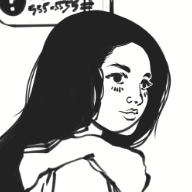-
Posts
719 -
Joined
-
Last visited
Reputation Activity
-
 Medical Officer Bones got a reaction from Meliora spero in Affinity Suite: Why is the essential ICO format still absent?
Medical Officer Bones got a reaction from Meliora spero in Affinity Suite: Why is the essential ICO format still absent?
@Meliora spero Absolutely agree with your comment on a plugin architecture.
If the developers had only integrated (for example) a Python API based plugin architecture from the very beginning! Just imagine the ecosystem of tools, exporters, importers, etcetera that all Affinity users could have had access to.
Serif could have created their own add-on market for more revenue, and so on.
It's mind-boggling how that low hanging fruit has been left to rot on the ground for years. Such a wasted opportunity.
-
 Medical Officer Bones got a reaction from nodeus in Affinity Suite: Why is the essential ICO format still absent?
Medical Officer Bones got a reaction from nodeus in Affinity Suite: Why is the essential ICO format still absent?
@Meliora spero Absolutely agree with your comment on a plugin architecture.
If the developers had only integrated (for example) a Python API based plugin architecture from the very beginning! Just imagine the ecosystem of tools, exporters, importers, etcetera that all Affinity users could have had access to.
Serif could have created their own add-on market for more revenue, and so on.
It's mind-boggling how that low hanging fruit has been left to rot on the ground for years. Such a wasted opportunity.
-
 Medical Officer Bones reacted to Meliora spero in Affinity Suite: Why is the essential ICO format still absent?
Medical Officer Bones reacted to Meliora spero in Affinity Suite: Why is the essential ICO format still absent?
If Serif had considered the right path toward their "professional fulfillment," they would have built Affinity to support plugins from the very beginning. That way, the software could have benefited from plugins early on — easing the pressure of expectations on a small company and allowing others to provide features I don't believe Serif ever will, judging by how far behind they are in other areas. It would have been the proper way to indirectly offer various specialist functions. But alas, what could and should have been part of the launch rocket back when Serif had their chance — during the hype around Affinity — never came. And now it's too late to have any real effect.
This could have spared serious users from having to submit fair and well-thought-out feature suggestions on this forum, only to be met with counter-posts by random, assertive users — responses that precisely extinguish the engagement of the very customers who could have given Serif a more ambitious customer base with actual commercial ties to the market. And I strongly sense that this forum’s biggest contributors clearly lack that.
Given that every other member here seems to know how to code — which is highly unusual for creatives — it's clear that Affinity attracts a rather unique audience. So it wouldn’t be entirely illogical for ICO files to be relevant to these users, or for them to recommend Affinity within development companies.
Affinity is being developed with the most unclear direction I’ve ever seen — and ICO support is definitely not an illogical feature when you compare it to what Serif’s messy and assertive marketing has claimed. Or to what Affinity is actually capable of.
So thank you @Pyanepsion for a customer's suggestion, and by all means, now let Serif assess whether their customer base (whose needs I hope they at least have a vague idea of) would benefit from such features. It makes absolutely no sense to me that the forum’s ever-present mega-posters — who lack commercial perspective or market insight — are the ones assessing, on behalf of everyone, what features belong in Affinity. That makes it all the more important that they listen. They don’t have much knowledge to offer.
-
 Medical Officer Bones got a reaction from Meliora spero in My current sentiment, re: v2.6
Medical Officer Bones got a reaction from Meliora spero in My current sentiment, re: v2.6
I second this. I posted a rather negative point of view --"review'-- of VectorStyler on these forums the first time I tested it, but have revised my opinion a few months ago and actually made the purchase.
It's good. Really good now. The developer proved to be very responsive as well in regards to comments about performance.
It's now part of my vector illustration set of tools: PhotoLine, VectorStyler, and InkScape. To be honest, Designer doesn't get much use nowadays.
Graphite is super-intriguing and the node-based workflow/editor together with layers already works quite well. The only issue when I tested it: its incredibly slow performance with bitmap images and more complex files. The developers have stated that a complete rewrite aimed at improving its performance is the next step.
Certainly one to keep an eye out on, I agree. Just might become a game changer.
-
 Medical Officer Bones got a reaction from Boldlinedesign in My current sentiment, re: v2.6
Medical Officer Bones got a reaction from Boldlinedesign in My current sentiment, re: v2.6
I second this. I posted a rather negative point of view --"review'-- of VectorStyler on these forums the first time I tested it, but have revised my opinion a few months ago and actually made the purchase.
It's good. Really good now. The developer proved to be very responsive as well in regards to comments about performance.
It's now part of my vector illustration set of tools: PhotoLine, VectorStyler, and InkScape. To be honest, Designer doesn't get much use nowadays.
Graphite is super-intriguing and the node-based workflow/editor together with layers already works quite well. The only issue when I tested it: its incredibly slow performance with bitmap images and more complex files. The developers have stated that a complete rewrite aimed at improving its performance is the next step.
Certainly one to keep an eye out on, I agree. Just might become a game changer.
-
 Medical Officer Bones got a reaction from Xanadu in My current sentiment, re: v2.6
Medical Officer Bones got a reaction from Xanadu in My current sentiment, re: v2.6
Seriously??!!!
When Adobe released their first version of InDesign it wasn't ready to challenge the market leader QuarkXpress yet. This was August 31st, 1999.
Only 7 months later InDesign 1.5 was released, and it turned heads in the industry. Only 16 months later InDesign 2 caused the industry to turn their backs on QuarkXpress.
16 months. That's all it took a dedicated team to create a professional DTP tool to dethrone the king. It wasn't buggy. It was ready for production. It introduced new and innovative features that made QXP look decidedly old in the teeth.
Now, requirements have grown and are more complex. Still, Affinity Publisher was released almost 5(!) years ago: June 19th 2019.
In 5 years and 5 months time the InDesign team released InDesign CS2, which is arguably still more production ready in a number of areas compared to the current version of Affinity Publisher.
One person. ONE PERSON created an Illustrator alternative in less than 5 years time that easily surpasses Affinity Designer. (VectorStyler)
...and here we are sweet talking Affinity in that it is still supposedly in its "wayfinding phase"????!!!!
If, after more than TEN YEARS OF WAYFINDING since the initial release of Affinity Designer back in Oct 2014 they are still lost, I am seriously starting to wonder whether they actually brought someone to draw a map.
What. The. Heck.
-
 Medical Officer Bones got a reaction from PaoloT in Epub suport export
Medical Officer Bones got a reaction from PaoloT in Epub suport export
Markdown file export would be all that we'd need to easily convert to a reflowable ePub file...
-
 Medical Officer Bones got a reaction from debraspicher in My current sentiment, re: v2.6
Medical Officer Bones got a reaction from debraspicher in My current sentiment, re: v2.6
Seriously??!!!
When Adobe released their first version of InDesign it wasn't ready to challenge the market leader QuarkXpress yet. This was August 31st, 1999.
Only 7 months later InDesign 1.5 was released, and it turned heads in the industry. Only 16 months later InDesign 2 caused the industry to turn their backs on QuarkXpress.
16 months. That's all it took a dedicated team to create a professional DTP tool to dethrone the king. It wasn't buggy. It was ready for production. It introduced new and innovative features that made QXP look decidedly old in the teeth.
Now, requirements have grown and are more complex. Still, Affinity Publisher was released almost 5(!) years ago: June 19th 2019.
In 5 years and 5 months time the InDesign team released InDesign CS2, which is arguably still more production ready in a number of areas compared to the current version of Affinity Publisher.
One person. ONE PERSON created an Illustrator alternative in less than 5 years time that easily surpasses Affinity Designer. (VectorStyler)
...and here we are sweet talking Affinity in that it is still supposedly in its "wayfinding phase"????!!!!
If, after more than TEN YEARS OF WAYFINDING since the initial release of Affinity Designer back in Oct 2014 they are still lost, I am seriously starting to wonder whether they actually brought someone to draw a map.
What. The. Heck.
-
 Medical Officer Bones got a reaction from Boldlinedesign in My current sentiment, re: v2.6
Medical Officer Bones got a reaction from Boldlinedesign in My current sentiment, re: v2.6
Seriously??!!!
When Adobe released their first version of InDesign it wasn't ready to challenge the market leader QuarkXpress yet. This was August 31st, 1999.
Only 7 months later InDesign 1.5 was released, and it turned heads in the industry. Only 16 months later InDesign 2 caused the industry to turn their backs on QuarkXpress.
16 months. That's all it took a dedicated team to create a professional DTP tool to dethrone the king. It wasn't buggy. It was ready for production. It introduced new and innovative features that made QXP look decidedly old in the teeth.
Now, requirements have grown and are more complex. Still, Affinity Publisher was released almost 5(!) years ago: June 19th 2019.
In 5 years and 5 months time the InDesign team released InDesign CS2, which is arguably still more production ready in a number of areas compared to the current version of Affinity Publisher.
One person. ONE PERSON created an Illustrator alternative in less than 5 years time that easily surpasses Affinity Designer. (VectorStyler)
...and here we are sweet talking Affinity in that it is still supposedly in its "wayfinding phase"????!!!!
If, after more than TEN YEARS OF WAYFINDING since the initial release of Affinity Designer back in Oct 2014 they are still lost, I am seriously starting to wonder whether they actually brought someone to draw a map.
What. The. Heck.
-
 Medical Officer Bones reacted to MikeW in My current sentiment, re: v2.6
Medical Officer Bones reacted to MikeW in My current sentiment, re: v2.6
And you, too, are in error.
Aldus had begun a new layout application code named Shuksan. After Adobe purchased Aldus, in part for this new application code, Adobe renamed the code name to K2 and finished the coding enough to be released as Adobe InDesign in 1999.
Pagemaker was slightly updated during this time and the main development ended on PM around 1991, fully ending 1994.
Point being PM and ID shared no code. They were separate products.
-
 Medical Officer Bones got a reaction from HCl in My current sentiment, re: v2.6
Medical Officer Bones got a reaction from HCl in My current sentiment, re: v2.6
Seriously??!!!
When Adobe released their first version of InDesign it wasn't ready to challenge the market leader QuarkXpress yet. This was August 31st, 1999.
Only 7 months later InDesign 1.5 was released, and it turned heads in the industry. Only 16 months later InDesign 2 caused the industry to turn their backs on QuarkXpress.
16 months. That's all it took a dedicated team to create a professional DTP tool to dethrone the king. It wasn't buggy. It was ready for production. It introduced new and innovative features that made QXP look decidedly old in the teeth.
Now, requirements have grown and are more complex. Still, Affinity Publisher was released almost 5(!) years ago: June 19th 2019.
In 5 years and 5 months time the InDesign team released InDesign CS2, which is arguably still more production ready in a number of areas compared to the current version of Affinity Publisher.
One person. ONE PERSON created an Illustrator alternative in less than 5 years time that easily surpasses Affinity Designer. (VectorStyler)
...and here we are sweet talking Affinity in that it is still supposedly in its "wayfinding phase"????!!!!
If, after more than TEN YEARS OF WAYFINDING since the initial release of Affinity Designer back in Oct 2014 they are still lost, I am seriously starting to wonder whether they actually brought someone to draw a map.
What. The. Heck.
-
 Medical Officer Bones got a reaction from Bryan Rieger in My current sentiment, re: v2.6
Medical Officer Bones got a reaction from Bryan Rieger in My current sentiment, re: v2.6
Seriously??!!!
When Adobe released their first version of InDesign it wasn't ready to challenge the market leader QuarkXpress yet. This was August 31st, 1999.
Only 7 months later InDesign 1.5 was released, and it turned heads in the industry. Only 16 months later InDesign 2 caused the industry to turn their backs on QuarkXpress.
16 months. That's all it took a dedicated team to create a professional DTP tool to dethrone the king. It wasn't buggy. It was ready for production. It introduced new and innovative features that made QXP look decidedly old in the teeth.
Now, requirements have grown and are more complex. Still, Affinity Publisher was released almost 5(!) years ago: June 19th 2019.
In 5 years and 5 months time the InDesign team released InDesign CS2, which is arguably still more production ready in a number of areas compared to the current version of Affinity Publisher.
One person. ONE PERSON created an Illustrator alternative in less than 5 years time that easily surpasses Affinity Designer. (VectorStyler)
...and here we are sweet talking Affinity in that it is still supposedly in its "wayfinding phase"????!!!!
If, after more than TEN YEARS OF WAYFINDING since the initial release of Affinity Designer back in Oct 2014 they are still lost, I am seriously starting to wonder whether they actually brought someone to draw a map.
What. The. Heck.
-
 Medical Officer Bones got a reaction from retrograde in Mesh gradient (again)
Medical Officer Bones got a reaction from retrograde in Mesh gradient (again)
Out of curiosity, I installed Vectorstyler, and gave it a whirl the past 2 hours. Some observations:
the mesh gradient tool is prone to corruption of the rendered result. Is that a bug?
In the first hour I experienced two crashes. One where I left the program for a while, and it spontaneously self-combusted. That doesn't happen very often in applications. That worries me.
Vectorstyler seems quite crash-prone. I was not doing anything complex, merely placing shapes and feeling my way around. Image effects like the curve corrupt the rendered result as well. Bug?
It has a good vector tool set. It feels somewhat sluggish to work with. I wonder how it will keep up with more complex artwork, since it did start to slow down with quite simple things. I also experienced lags and hiccups all the time during testing. Working with text felt slow as well. Even the GUI panels feel slow to respond. Overall, it feels clunky. Other design apps feel much snappier. There are a number of features that I really like: the Repeater (something I wanted in other design apps), and the Stroke Width tool which I use all the time in OpenToonz and ClipStudio. There are a lot of options to fine-tune things as well. The vector brushes remind me of Expression (remember that gem?), which set the bar quite high. I am not a particular fan of the way image effects are isolated from the layer stack. All in all, it has potential.
I have to add that Vectorstyler is one of the least stable and buggy design apps that I encountered in the past few years. The developers should focus on stabilizing their app and improve the overall performance. In its current version it is still too crash prone and buggy for my taste.
A standard test of mine is to load a certain AI file (artwork not by me, but by Von Glitschka).
Affinity Designer loads it perfectly:
The same AI file in Vectorstyler:
Oops! Not quite-so-compatible with AI files, it seems.
Editing this file is butter-smooth in Affinity Designer. In Vectorstyler it is a trial in patience. Even moving single objects updates the screen perhaps by 2 or 3 frames per second. Which confirms my initial doubts about Vectorstyler's performance with even medium complex art such as in this case.
Vectorstyler is not quite ready for prime time, in my opinion. An interesting newcomer on the market to be sure. But I'd rather have decent performance while editing than a missing mesh gradient tool. What use is a mesh gradient tool when editing slows down to a crawl with medium-complex vector art?
It is also quite expensive for what is on offer in my opinion.
I played around with the Windows version, btw.
-
 Medical Officer Bones reacted to SanSerif in Xara Designer for PC is software to live up to
Medical Officer Bones reacted to SanSerif in Xara Designer for PC is software to live up to
Remembered something. In Xara, you can build as many custom toolbars as you want. Close the standard tool box, if that 🤕 you that much. Try doing that in Affinity. Read carefully, it's not merely customising standard toolbox with new icons. No. You can completely build a new one. That's something affinity can use.
https://m.youtube.com/watch?v=nepZcfFm-Cs&pp=ygUTQ3VzdG9tIHRvb2xiYXIgeGFyYQ%3D%3D
But as far as customisable UI goes, nothing beats Painstorm studio as far as I know. You can zoom and resize individual windows. Recolour the interface. Change the font size. Build custom tool bars with any elements. You read that right. You can throw in a colour wheel a few brushes into a dialogue box if that's what you need. Have it close at hand. You can move things around so much that it feels you're completely deconstructing the UI.
And the brush engine. Oof. It's maddeningly customisable too.
And it's written by one guy. And it's 25 quid.
PhotoLine also offers some extremely breathtaking customisation and key binding. You can bind keys for practically anything. Have custom tool bars. Change what appears where. Change how things appear. Change size of UI. Change icon styles. Endlessly. It's like friggin fractals. Almost too much. Written by 2 German brothers.
Mind you, PL is more than a photo editor. It also does vector. It also does basic DTP and has features that affinity publisher still lacks. Barcodes for instance. Vector patterns.
PL is available for Mac too. There goes another excuse.
So, no, you don't need an entire high rise building full of developers to build a good software. Just having the right approach is all it takes. It's almost never a lack of talent but poor talent management and resource allocation.
-
 Medical Officer Bones got a reaction from Pšenda in Can and will the Ai features get better?
Medical Officer Bones got a reaction from Pšenda in Can and will the Ai features get better?
For fun I tested Photoshop, Affinity, and Krita (with the free open source segmentation selection plugin).
Photoshop 2025 wouldn't cooperate at all. Soft edge, hard edge, ... Unusable.
In Affinity Photo I had to turn off soft edges. Then it did an okay job.
Krita was the simplest. No change of settings required, a single click on the wood sufficed. The selection is slightly better than Affinity's.
Neither Affinity's nor Krita's selection is acceptable 'as-is', and both require more (manual) work.
But I can see the potential to at least speed up the selection process.
-
 Medical Officer Bones got a reaction from Alfred in James Ritson save AFFINITY
Medical Officer Bones got a reaction from Alfred in James Ritson save AFFINITY
Photoshop is, in my opinion and experience, the worst candidate for optimizing and preparing bitmap assets for digital, screen, and web contexts. It is inferior in almost every regard compared to other options.
That said, if print is the context, I suppose Photoshop is still a good option. 😉
-
 Medical Officer Bones got a reaction from garrettm30 in Mesh gradient (again)
Medical Officer Bones got a reaction from garrettm30 in Mesh gradient (again)
Out of curiosity, I installed Vectorstyler, and gave it a whirl the past 2 hours. Some observations:
the mesh gradient tool is prone to corruption of the rendered result. Is that a bug?
In the first hour I experienced two crashes. One where I left the program for a while, and it spontaneously self-combusted. That doesn't happen very often in applications. That worries me.
Vectorstyler seems quite crash-prone. I was not doing anything complex, merely placing shapes and feeling my way around. Image effects like the curve corrupt the rendered result as well. Bug?
It has a good vector tool set. It feels somewhat sluggish to work with. I wonder how it will keep up with more complex artwork, since it did start to slow down with quite simple things. I also experienced lags and hiccups all the time during testing. Working with text felt slow as well. Even the GUI panels feel slow to respond. Overall, it feels clunky. Other design apps feel much snappier. There are a number of features that I really like: the Repeater (something I wanted in other design apps), and the Stroke Width tool which I use all the time in OpenToonz and ClipStudio. There are a lot of options to fine-tune things as well. The vector brushes remind me of Expression (remember that gem?), which set the bar quite high. I am not a particular fan of the way image effects are isolated from the layer stack. All in all, it has potential.
I have to add that Vectorstyler is one of the least stable and buggy design apps that I encountered in the past few years. The developers should focus on stabilizing their app and improve the overall performance. In its current version it is still too crash prone and buggy for my taste.
A standard test of mine is to load a certain AI file (artwork not by me, but by Von Glitschka).
Affinity Designer loads it perfectly:
The same AI file in Vectorstyler:
Oops! Not quite-so-compatible with AI files, it seems.
Editing this file is butter-smooth in Affinity Designer. In Vectorstyler it is a trial in patience. Even moving single objects updates the screen perhaps by 2 or 3 frames per second. Which confirms my initial doubts about Vectorstyler's performance with even medium complex art such as in this case.
Vectorstyler is not quite ready for prime time, in my opinion. An interesting newcomer on the market to be sure. But I'd rather have decent performance while editing than a missing mesh gradient tool. What use is a mesh gradient tool when editing slows down to a crawl with medium-complex vector art?
It is also quite expensive for what is on offer in my opinion.
I played around with the Windows version, btw.
-
 Medical Officer Bones got a reaction from Songling in Please add finally 1 Bit Tiff (at least export in Photo) Support!
Medical Officer Bones got a reaction from Songling in Please add finally 1 Bit Tiff (at least export in Photo) Support!
It really is a shame, and the lack of proper 1bit image support is one of the primary reasons why I am unable to use either Photo or Publisher for the comic publishing and technical documentation that I work on.
Publisher only needs to respect 1bit images during PDF export. But it doesn't. That alone prevents me from using Publisher. It is such a basic requirement, but alas!
While the inexpensive PhotoLine (which doesn't even focus on DTP) will allow me to work with 1bit images in layers (unheard of in any other image editor, including Photoshop!) and freely combine with CMYK/RGB layers to output a multi-page PDF/X 1~4 compliant PDF file with the correct separations. I even use it to check PDFs for separation issues at times when I do not have access to Acrobat.
Of course, for more intricate publishing jobs I still need InDesign.
-
 Medical Officer Bones reacted to SpinDreams in Create editable PDF
Medical Officer Bones reacted to SpinDreams in Create editable PDF
For the time being, the best workflow I have found to create fillable PDF forms easily is to create my PDF in Afinity adding lines and boxes to the design where I want editable fields and tick boxes to be etc, export to PDF and then load it into PDF-XChange Editor and use the "Identify forms" option to detect those items and automate the adding of the fields. A small amount of tweaking and it's good to go. Much easier than creating by hand or editing direct in PDF-XChange Editor. Where I want lines but no editable fields I use dashed lines instead which it ignores.
-
 Medical Officer Bones reacted to Oufti in Who will use Publisher in 2025
Medical Officer Bones reacted to Oufti in Who will use Publisher in 2025
For comic-books (and other tasks), I regret that 1-bit colorspace is not supported.
I would like to be able to have pure black images at 1200 ppi and contone images at 300 for example, in the same document.
The absence of color-separation control tool is also problematic…
For the rest, I'll continue to use Publisher for creating traditional books, ads and posters.
-
 Medical Officer Bones got a reaction from influxx in Delete pixels??? Like Photoshop
Medical Officer Bones got a reaction from influxx in Delete pixels??? Like Photoshop
When a selection is made and copied, it copies the current layer's properties and resolution (and dimensions!).
Let's say we are working in an 8 bit RGB 1920x1080 image and drag a 3000x2000 32bit EXR file, an A4 300ppi 8bit CMYK, and a 1200ppi A3 1bit black and white into this document. We would need to scale some of these down to fit the lower resolution document.
All three layers retain their original data. When a selection is made of the 1 bit A3 1200ppi layer and duplicated or cut into a new layer that copy will maintain the original data. When a merged copy is made of that marquee selection it will be pasted at the image file's intent, i.e.: 8 bit RGB 1920x1080 resolution (but canvas size of that layer will be the size of the marquee selection).
The layer's original data informs how merging of layers functions as well or how the tools work. If we merge down the CMYK layer into the 1bit layer the CMYK layer's data is converted to the 1bit's layer bit depth and resolution.
If we use the brush tool to draw in one of these layers we cannot use colour in the 1bit layer: only black or white with aliased brushes. And no transparency (although it is actually possible to assign transparency to 1bit monochrome files/layers in PhotoLine - which is very handy when editing these and we can work in layers in 1bit monochrome mode too!).
Obviously certain blend modes will not have much effect (if any at all) when working with 1bit or greyscale bitmap layers.
At any rate, it's a different way of working compared to other layer-based image editors, and as always there are advantages and disadvantages. One caveat is that this adds a new level of control yet adds more complexity.
For example, when we merge that CMYK layer into a 1bit layer, the default conversion will be a very bad one without any dithering. A simple 50% threshold is used. So to prevent this we could first add a threshold adjustment layer to the CMYK layer to at least control the conversion a little better. Or we could convert the CMYK layer to a dithered black and white version with the reduce colors filter and then merge it into the 1bit layer for a good conversion.
Or (since the bottom image layer in the layer stack controls the final rendering intent) we could switch the bottom image layer to CMYK mode, then turn off the layer's CMY channels in the layer properties, and merge down the K channel only into the 1bit layer, then switch the bottom layer back to RGB, and voila: only the black of the CMYK layer is merged down without affecting any other layer but the bottom one (which would be preferably an empty bitmap layer just to control final rendering intent).
This last move is utterly alien to any other image editor, by the way.
-
 Medical Officer Bones got a reaction from MikeW in Engraved text, how do I make that look real?
Medical Officer Bones got a reaction from MikeW in Engraved text, how do I make that look real?
Ah, yes, true enough. Got carried away, and made these quickly. Forgot about the actual meaning of the word in the process
Obviously "true" embossed or engraved lettering is also simple to achieve.
Anyway, if a more stylized effect is required simple layer effects will suffice.
-
 Medical Officer Bones got a reaction from Alfred in Engraved text, how do I make that look real?
Medical Officer Bones got a reaction from Alfred in Engraved text, how do I make that look real?
Honestly, nowadays I feel that playing around with layer effects in a 2d image editor to create effects like these is a bit of a waste of time because they can't be changed or varied very easily.
Effects like these look a) much better and b) can be adjusted in real time and c) with quick texture and realistic lighting variations in a 3d application such as Blender (for free). Point in case is the engraved end result as demonstrated in @KarinC's posted video: it looks very rough and unfinished - unconvincing even for a layer effects version.
I agree that learning a 3D app can be daunting, but it's also a lot of fun. And massively expands your creative possibilities.
Here is a 3 minutes rough Blender-made doodle:
-
 Medical Officer Bones got a reaction from henryanthony in Engraved text, how do I make that look real?
Medical Officer Bones got a reaction from henryanthony in Engraved text, how do I make that look real?
Honestly, nowadays I feel that playing around with layer effects in a 2d image editor to create effects like these is a bit of a waste of time because they can't be changed or varied very easily.
Effects like these look a) much better and b) can be adjusted in real time and c) with quick texture and realistic lighting variations in a 3d application such as Blender (for free). Point in case is the engraved end result as demonstrated in @KarinC's posted video: it looks very rough and unfinished - unconvincing even for a layer effects version.
I agree that learning a 3D app can be daunting, but it's also a lot of fun. And massively expands your creative possibilities.
Here is a 3 minutes rough Blender-made doodle:
-
 Medical Officer Bones got a reaction from MikeW in Delete pixels??? Like Photoshop
Medical Officer Bones got a reaction from MikeW in Delete pixels??? Like Photoshop
The only image editor that I know of that actually manages this is PhotoLine.
PhotoLine's Image layers do not differentiate between arbitrary "raster" and "image" layers or "smart objects" (Photoshop). In PhotoLine an image imported/dragged into a layer is by default an editable pixel layer, yet it retains its original bit depth, resolution, image mode, transparency setting, colour management profile, and transformation independent of the file's output intent.
And the pixel data remains editable without affecting the original intent of that image layer.
So it is entirely possible to have such a workflow. It's just that 99% of creatives aren't familiar with this or can even imagine how that is possible because (as far as I am aware) outside of node-based editing workflows, no other layer-based image editor allows for such a workflow. Which explains your confusion how that would work @R C-R.
Nevertheless it is possible and a bit of a game changer in one's workflow, albeit that the workflow is a tad different, of course.










